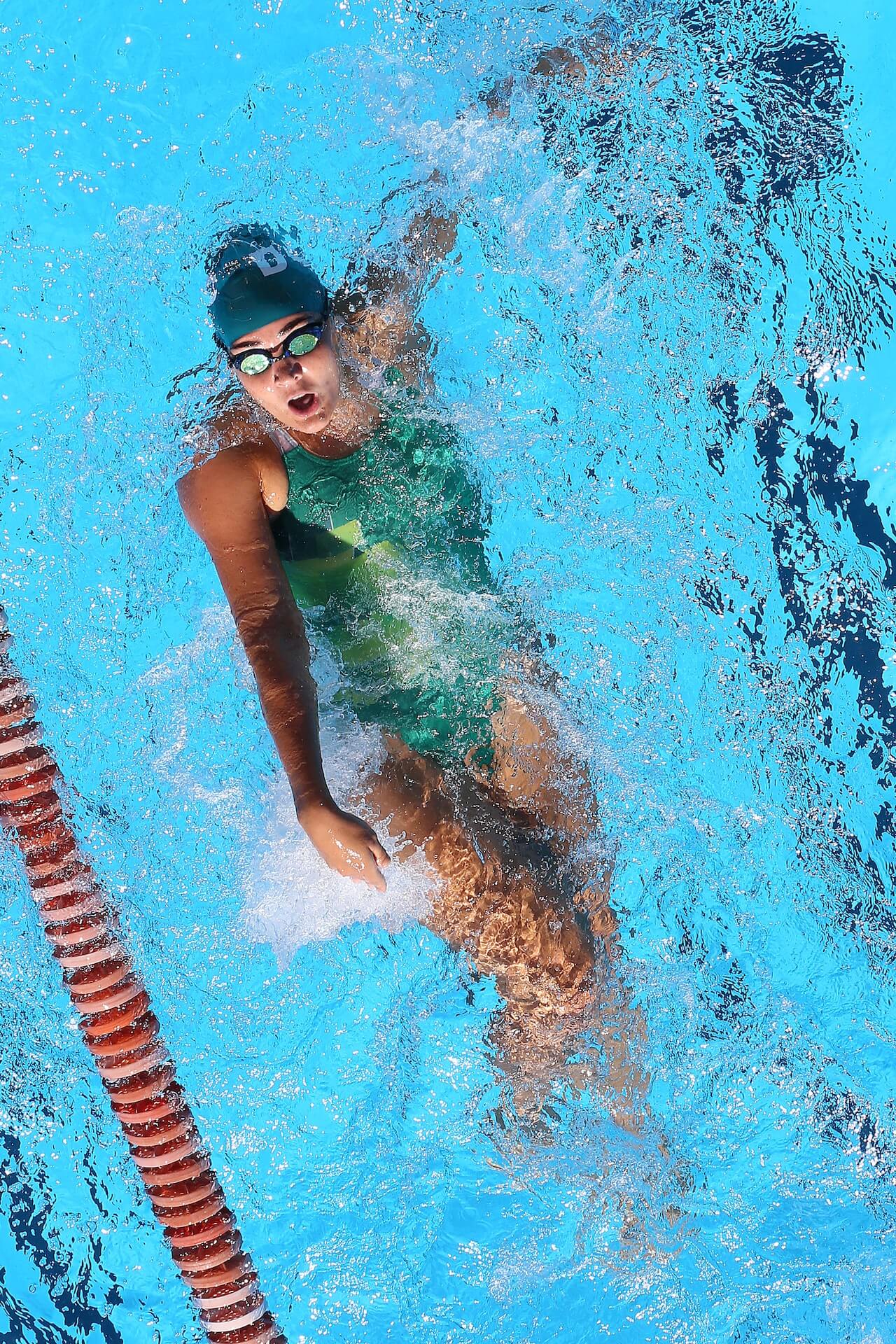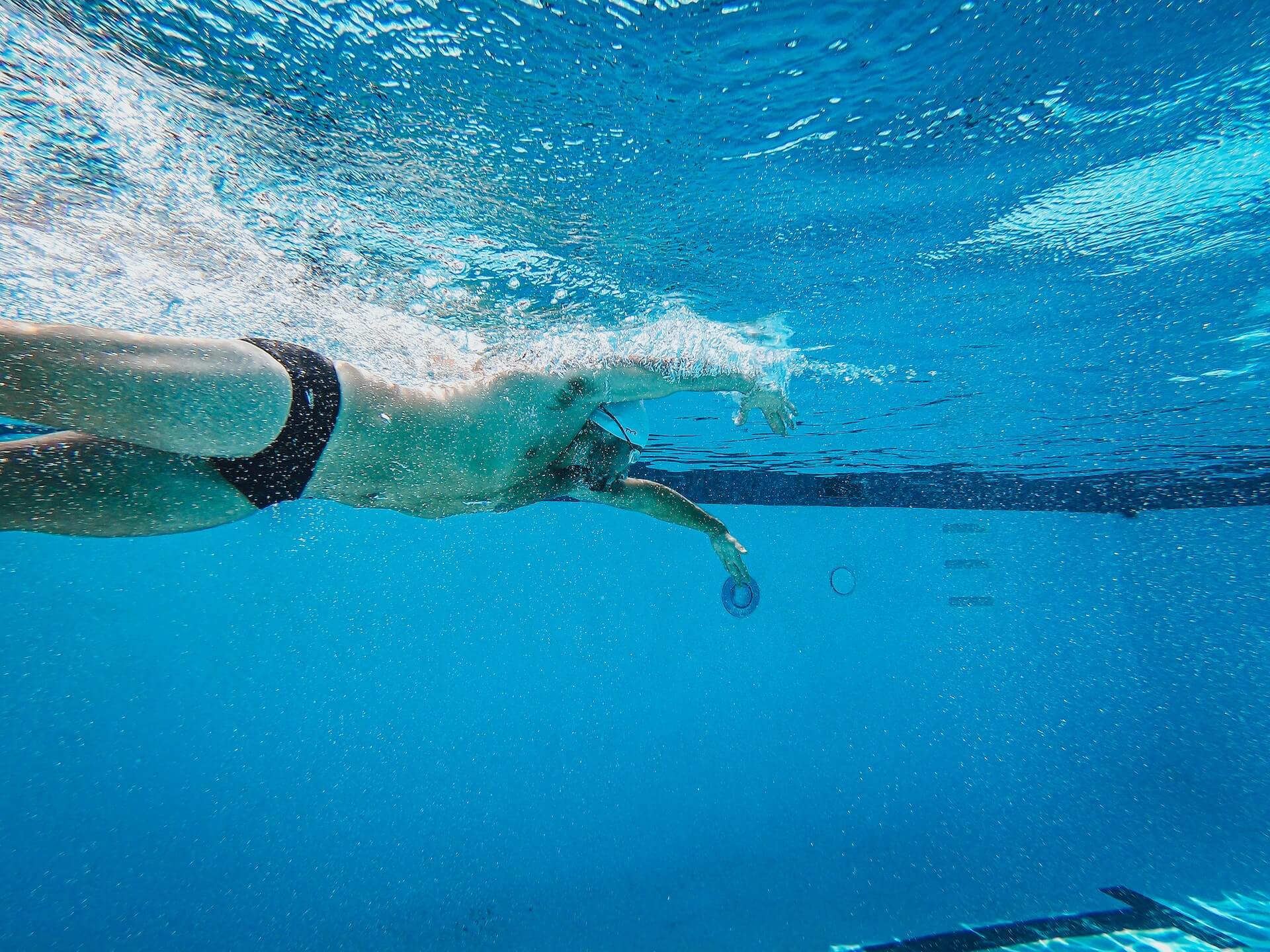An important factor to improving performance in the water is increasing lung capacity. Having greater lung capacity allows swimmers to efficiently utilize oxygen, enabling them to swim longer distances with less fatigue.

By utilizing various breathing exercises, such as diaphragmatic breathing and hypoxic training, you can train your lungs to optimize oxygen intake and increase lung capacity for swimming. Additionally, swimmers can benefit from understanding knowing when to breath during each stroke, as well as learning how to perform light kicks to conserve energy.
In this article, we’ll go in-depth on the various techniques that can help swimmers increase their lung capacity and improve their overall swimming abilities.
Improving Lung Capacity for Swimming
Breathing is a vital process in our daily lives, and when it comes to swimming, it takes on even greater importance. Efficient breathing allows swimmers to maximize the supply of oxygen to their muscles, subsequently powering their movements in the water.
A swimmer with good lung capacity can take in more oxygen per breath, which can reduce fatigue during high-intensity activities such as swimming. Developing lung capacity involves the practice of deep breathing techniques, which aim to expand the lungs and allow for greater oxygen intake.
One such technique is diaphragmatic breathing, where the swimmer focuses on expanding the diaphragm, the muscle that separates the chest from the abdomen. This expansion creates more space for the lungs to fill with oxygen, which in turn provides increased energy supply to the muscles.
Alongside practicing breathing techniques, swimmers must pay attention to their swimming technique. A smooth, controlled, and balanced swimming style can minimize energy waste and help maintain an even breathing pattern. As a result, swimmers can better manage their oxygen levels and maintain a steady physical performance throughout their swim.
Regular exercise and training play a crucial role in achieving improved lung capacity for swimming. Specific swim workouts, such as interval training and breath control drills, challenge the lungs and force them to adapt and grow. These sessions enable the swimmer to perform better under physical stress, ultimately increasing their endurance and overall performance.
Importance of Proper Breathing Technique

Proper breathing technique plays a vital role in enhancing a swimmer’s performance and increasing their lung capacity. Efficient breathing patterns enable swimmers to maintain their stamina and avoid fatigue, ensuring that they can swim longer distances with ease.
One key aspect of proper breathing in swimming is managing the balance between inspiration (inhaling) and expiration (exhaling). Swimmers must focus on inhaling quickly and exhaling at a controlled pace to maintain adequate oxygen flow to their muscles. This enables them to maintain a steady swimming performance.
When it comes to specific breathing techniques, swimmers should aim to maintain their body position and avoid turning their entire bodies sideways while breathing. For example, keeping the front torso facing the bottom of the pool as the head turns for air is essential for efficient and uninterrupted swimming.
In addition to posture, establishing a breathing pattern depending on the intensity of the swim is also crucial. Swimmers participating in short sprint races, like the 100 freestyle, will require substantially more oxygen. Thus, swimmers must adapt their breathing patterns to ensure they have sufficient oxygen supply during such races.
Training to increase lung capacity can involve holding one’s breath for longer periods or practicing low-frequency breathing patterns. These exercises, known as breath control sets, can be very useful for both improving swimming technique and augmenting lung capacity.
Breath Control and Swimming Strokes
Mastering breathing techniques and incorporating them into different swimming strokes, such as freestyle, backstroke, butterfly, and breaststroke, can help swimmers achieve better results.
Freestyle
In freestyle, it’s vital to focus on maintaining a steady breathing pattern while keeping your head low in the water and turning to the side for a deep breath.
One effective method is to breathe every three or five strokes, which allows for a more balanced oxygen intake and helps improve buoyancy.
As a swimmer progresses, they can attempt to increase the number of strokes between breaths, ultimately enhancing their lung capacity and breath control. It is essential to practice and remain patient during this process, as it may be challenging initially.
Backstroke
For backstroke, swimmers should concentrate on taking deep breaths when their arms are out of the water and exhaling as their arms go back in. Maintaining a regular breath rhythm can prevent breathlessness and facilitate energy conservation during each lap.
Butterfly
In both butterfly and breaststroke, having a proper breathing pattern is crucial to maintaining both rhythm and speed throughout each lap. For butterfly, swimmers generally take a quick breath during the recovery phase when their head is above water.
Breaststroke
In breaststroke, it is common to breathe in during the pull phase when the head is lifted above the waterline and then exhale when the head goes back underwater during the glide phase.
Ways to Increase Lung Capacity
Incorporating the exercises below into your routine can help maximize your lung capacity, making swimming workouts more efficient.
Hypoxic Training
One way to improve lung capacity is to engage in hypoxic training.
The first method involves breathing every X number of strokes per lap. By gradually increasing the number of strokes between breaths (e.g. one breath every 5 strokes, 7 strokes, 9 strokes, etc.), swimmers can train their lungs to work under oxygen deprivation conditions, which encourages the lungs to adapt and become more efficient.
To go a step further, swimmers can challenge themselves by limiting how many breaths they can take per lap while swimming at a regular pace. This induces a rapid build-up of lactic acid, forcing the lungs to adapt and increase in capacity to meet the demand for more oxygen. So for example, taking only 3 breaths per lap, or only two, and so on until you can do a no-breather lap.
It’s very important that you are swimming at a regular pace, and that you try to keep your kicks light. Sprinting or kicking too hard will use up too much oxygen and force you to take a breath much sooner.
Kick Drills
Another effective drill for building lung strength is the kick drill. Swimmers can do this by using a kickboard and kicking at a steady pace while following a specific breathing pattern. For example, breathe in for three seconds and breathe out for five seconds. This helps build the strength of the intercostal muscles, which support the lungs during deep breathing, and also helps increase lung capacity.
Lifestyle Changes Affecting Lung Capacity

Smoking
Swimmers should avoid smoking and exposure to pollutants, as both can compromise lung health. Smoking reduces lung function, while pollutants can cause irritation and inflammation of the airways. Staying away from these harmful substances will aid in maintaining optimal lung capacity.
Diet
Eating foods rich in antioxidants, such as leafy greens, berries, and nuts, can help protect and improve lung function. Omega-3 fatty acids found in fish and seeds also contribute to lung health. Including these nutrient-rich foods in your diet can lead to better lung capacity over time.
Hydration
Hydration plays a crucial role in maintaining lung capacity. Drinking plenty of water helps keep the airways moist and the lungs functioning efficiently. Staying hydrated also aids in thinning mucus, which can obstruct the airways and reduce lung capacity. Swimmers should make sure to drink water before, during, and after training sessions to support lung health.
Bodyweight
Carrying excess weight, especially in the abdominal area, can restrict the lungs and diaphragm, reducing overall lung capacity. Maintaining a healthy weight through diet and regular exercise can alleviate this burden on the lungs, leading to increased lung capacity and improved swimming performance.
Frequently Asked Questions
What are the best exercises to enhance lung capacity for swimming?
There are various exercises that can improve lung capacity for swimming. One effective method is breath control swimming, which involves limiting breathing to every X strokes per lap (you set a number and increase it over time). A simple approach is to take a breath every five, seven, nine strokes, and so on, to challenge and develop lung capacity. You can also do oxygen deprivation training, where you are only allowed to breathe a certain amount of times per lap.
How does dryland training improve lung capacity?
Dryland training offers strength and conditioning exercises that develop the muscles used in swimming. As a result, swimmers may experience better control over their breathing and an increase in lung capacity. Some popular dryland exercises that can help improve lung capacity include running, cycling, rowing, and targeted breathing exercises.
Which breathing exercises can enhance lung capacity?
Several breathing exercises can help increase lung capacity. Diaphragmatic breathing, also known as belly breathing, focuses on engaging the diaphragm to draw in more air. Pursed-lip breathing, which involves inhaling through the nose and exhaling through pursed lips, can also improve lung capacity.
Can singing help to expand lung capacity for swimming?
Yes, singing can help expand lung capacity. Singing involves breath control, requires good posture, and engages the diaphragm, all of which contribute to improved lung function and capacity. Regular singing can help swimmers indirectly by enhancing their breathing techniques and increasing their lung capacity.
How to avoid shortness of breath during swimming?
To avoid shortness of breath while swimming, try to establish a comfortable and consistent breathing pattern. Focus on balancing the stroke and ensuring a smoother swim. Breathe every three strokes if needed, concentrating on your rhythm, as this will help with breathing control. Additionally, ensure proper warm-up, cooldown, and regular practice to improve overall lung capacity and endurance.
Sources:
- https://www.swimnetwork.com/breathing-exercises-for-swimmers/
- https://www.masterclass.com/articles/swimming-breath-technique-guide
- https://www.usms.org/fitness-and-training/articles-and-videos/articles/drills-thatll-help-you-build-your-lung-strength-and-improve-your-freestyle-breathing-pattern
- https://www.swimoutlet.com/blogs/guides/how-to-increase-lung-capacity-for-swimming
- https://effortlessswimming.com/how-to-increase-your-lung-capacity-for-swimming/
- https://www.healthline.com/health/how-to-increase-lung-capacity
